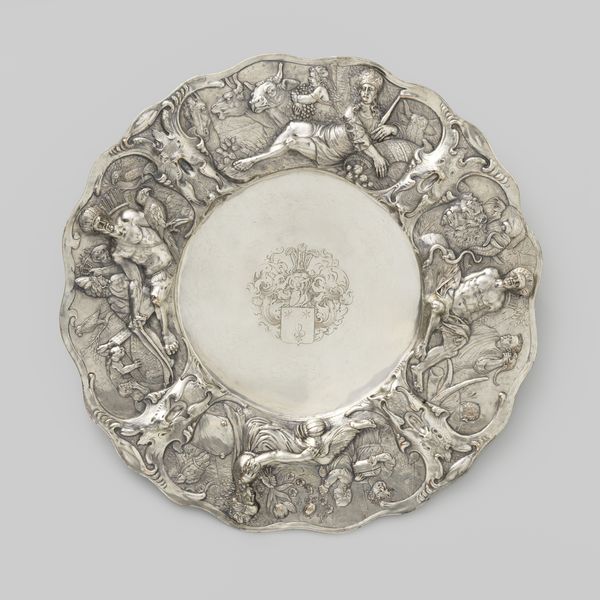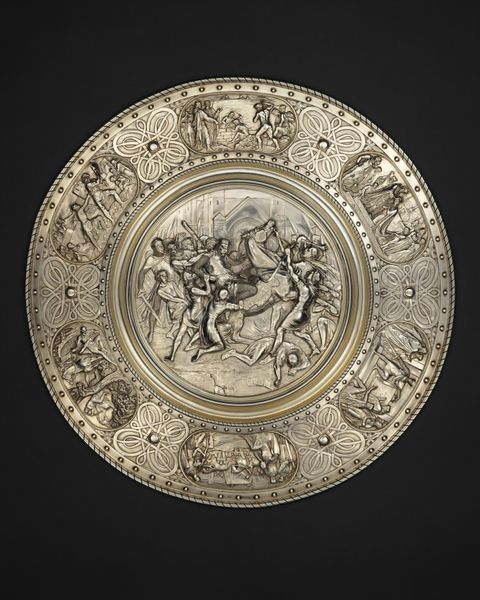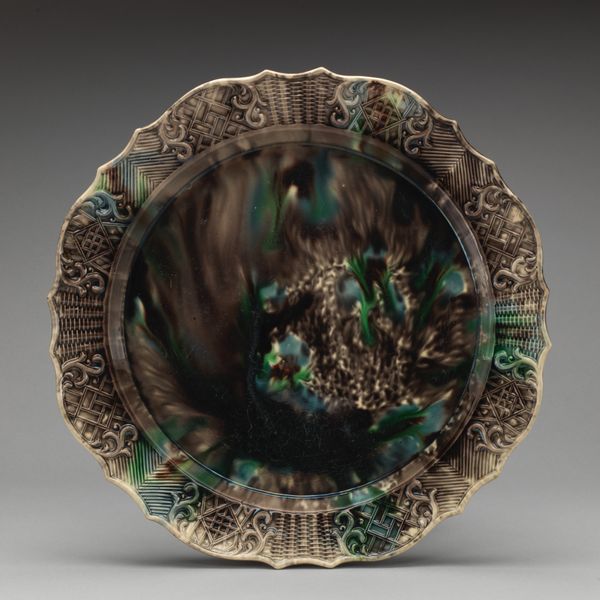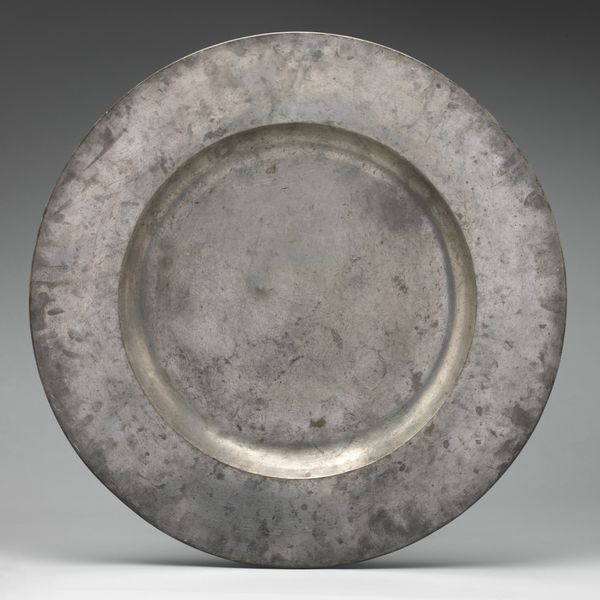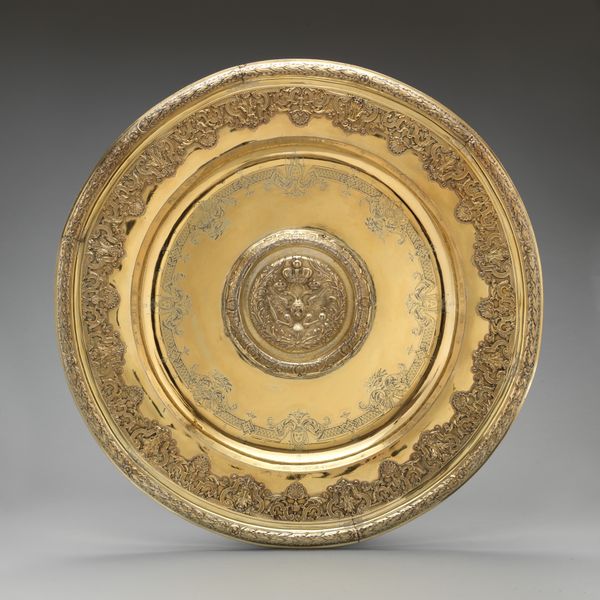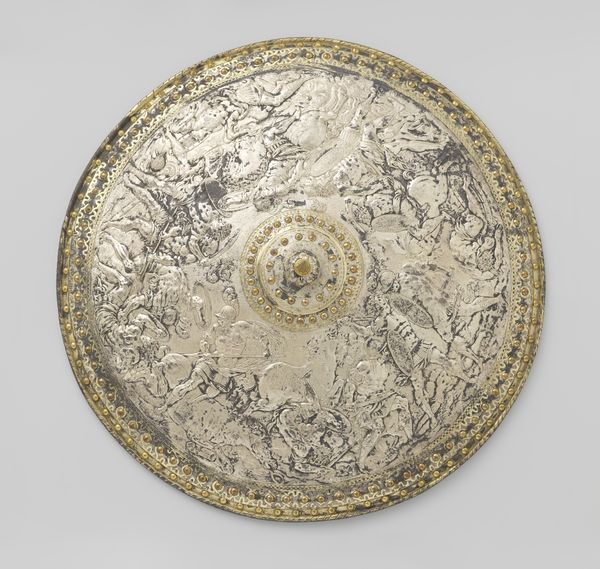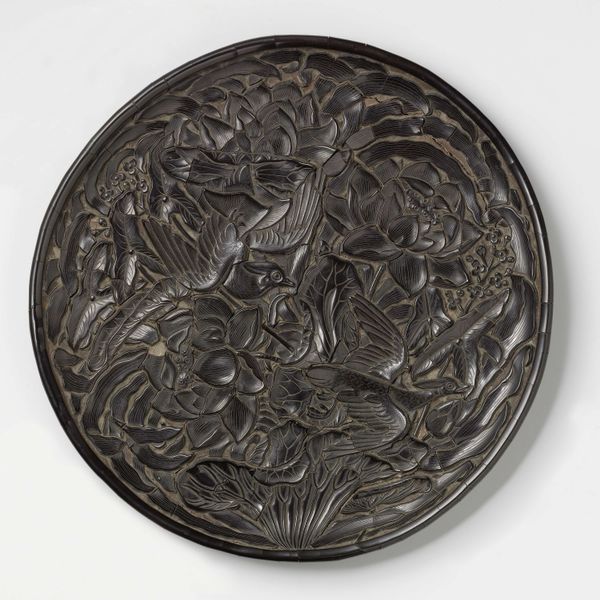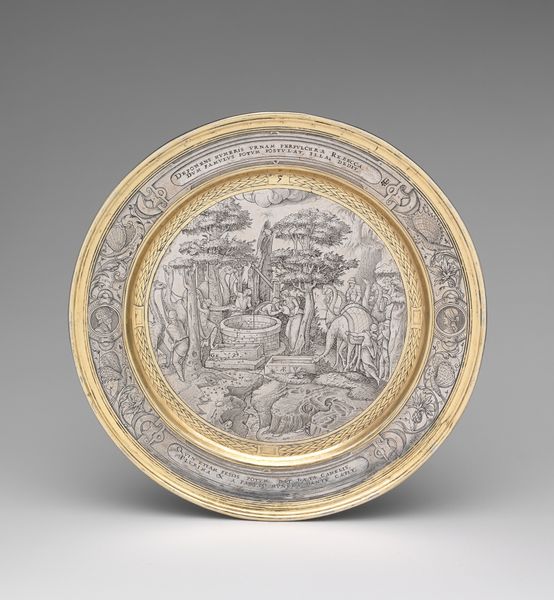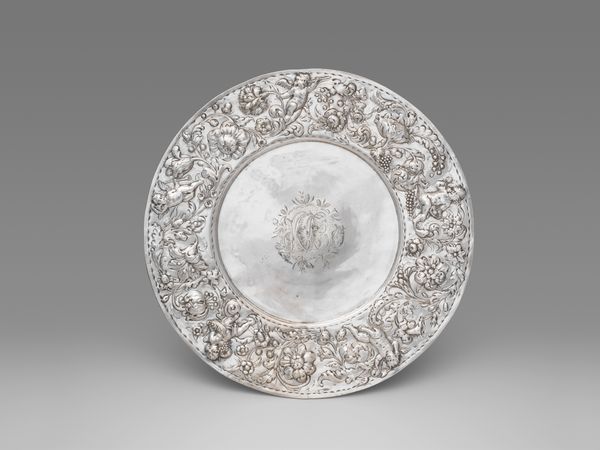
Dimensions: Diameter: 9 1/2 in. (24.1 cm)
Copyright: Public Domain
Editor: Here we have a Whieldon-type Plate from between 1750 and 1799. It’s earthenware and ceramic. The mottled pattern in the center reminds me a bit of marble. What do you see in this piece? Curator: It's fascinating to consider this plate within its historical context. The mid-to-late 18th century was a period of immense social upheaval, wouldn't you agree? Think about the rise of consumer culture alongside deeply entrenched social hierarchies. This plate, seemingly a simple domestic object, embodies these tensions. Editor: How so? Curator: Well, "Whieldon-type" refers to a specific style, accessible enough for middle class families to adopt elements of Rococo fashion. The Rococo flair is evident in its shape. Yet, while emulating aristocratic aesthetics, it does so through industrialized processes. Reflect on who had access to such "affordable" luxury, and at what cost to labor and resources. Editor: That makes me think about who was excluded, both in terms of production and consumption. What about the marble-like effect? Was that a common feature? Curator: The marbled effect, or tortoiseshell glaze, imitates natural materials, creating a sense of value. We should interrogate what "value" meant at the time. Did it reflect intrinsic worth or reinforce class aspirations? Does the material speak of human innovation, the commodification of nature, or something else entirely? Editor: So, the plate isn't just a plate; it's a statement. I hadn't thought about it that way. Curator: Precisely. By understanding the social currents, we see that this plate provides unique access into past dynamics of identity, class, and societal ambition. Editor: Thank you. It’s helped me view decorative arts with much more context.
Comments
No comments
Be the first to comment and join the conversation on the ultimate creative platform.
